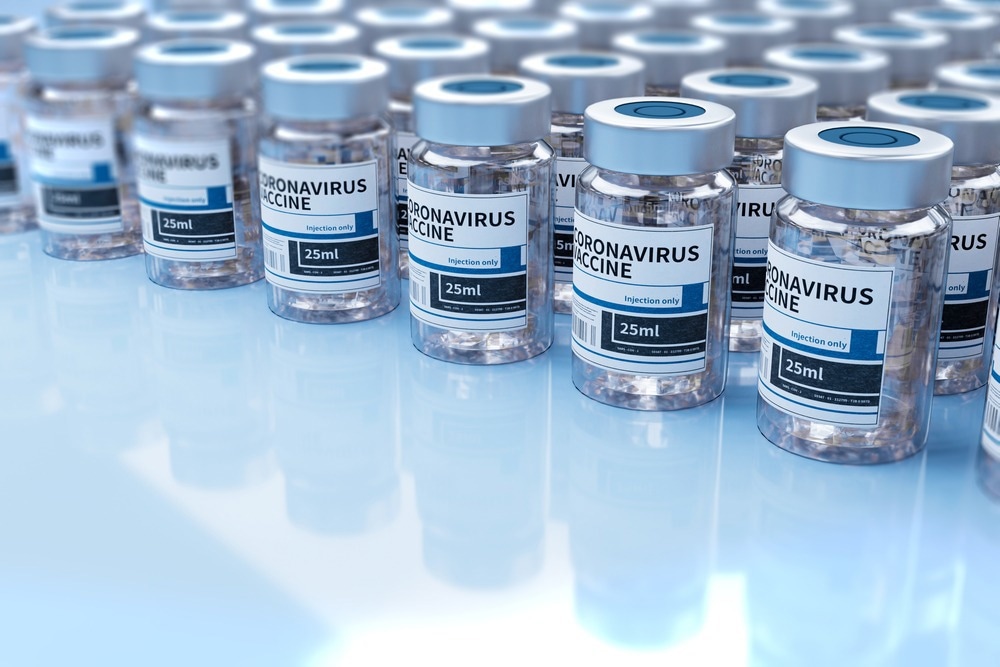Study suggests an immunological benefit of combining previous natural infection with vaccination against COVID-19 using a combination of different vaccine platforms
In a recent study published in PLoS Pathogens, researchers explored severe acute respiratory syndrome coronavirus 2 (SARS-CoV-2)-targeted immune responses among COVAC1 participants who received a novel self-amplifying ribonucleic acid (saRNA) vaccine followed by the messenger RNA (mRNA) BNT162b2 vaccine BNT162b2 vaccine, with or without prior coronavirus disease 2019 (COVID-19) history.

Background
Vaccination strategies to boost pre-existing humoral and cell-mediated immune responses to SARS-CoV-2 must be optimized to improve global public health. The continual emergence of novel SARS-CoV-2 variants of concern (VOCs) has threatened vaccine efficacy and immune levels among individuals with prior COVID-19 history, those who received COVID-19 vaccinations, or both (hybrid immunity). Even though vaccination strategies are yet to be optimized, studies have reported enhanced immune protection from booster dose administrations and vaccinations following natural SARS-CoV-2 infections.
About the study
In the present study, researchers compared immune responses among COVAC1 participants who received two saRNA vaccine doses and subsequently a BNT162b2 vaccine dose (heterologous vaccination) and those who were administered BNT162b2 mRNA vaccine doses only (homologous vaccination).
Thirty-five individuals who received saRNA in the COVAC1 trial and 40 individuals who received only BNT162b2 homologous vaccinations (non-saRNA vaccine group) were enrolled for the analysis. The saRNA vaccinees also received mRNA BNT162b2 (n=25) or ChAdOx nCoV-19 adenoviral vector (n=10) vaccinations.
Among the heterologous and homologous vaccinees, 15 and 18 individuals reported prior COVID-19 history, respectively, confirmed by reverse transcription-polymerase chain reaction (PCR) or diagnostic antibody (Ab) testing. Binding Ab (bAb) titers against SARS-CoV-2 spike (S), and nucleocapsid (N) proteins were assessed by enzyme-linked immunosorbent assay (ELISA) assays.
Neutralizing Ab (nAb) titers against the SARS-CoV-2 wildtype (WT) strain and Delta VOC and Omicron VOC were assessed using pseudovirus (PV)-based neutralization assays and human embryonic kidney (HEK)293T-ACE2 (angiotensin-converting enzyme 2) cells. Geometric mean titers (GMT) and 50% neutralization titers (NT50) were evaluated. Cell-mediated immune responses were monitored using AIM (activation-induced marker) assays and IFN-γ (interferon-gamma) release assays.
Results
Fifty percent of the participants in both groups showed COVID-19 recovery with greater humoral Ab-mediated and cellular T lymphocyte-mediated immune responses among those with prior COVID-19 history and individuals who were administered heterologous vaccinations. Most (83%) participants who were SARS-CoV-2-naïve and received saRNA vaccinations showed seroconversion after the second vaccination, and individuals with prior COVID-19 history showed 27-fold greater Ab titers 14 days after the heterologous saRNA vaccinations.
However, Ab titers were lesser than those observed post-homologous mRNA vaccinations. After 14 days of the second mRNA vaccination, the bAb and nAb titers were statistically significantly greater among heterologous vaccinees with prior COVID-19 history compared to homologous vaccinees or SARS-CoV-2-naive participants.
Cellular immune responses were also greatest among heterologous vaccines with prior COVID-19 history, with a greater fraction of anti-S cluster of differentiation (CD)8+ (natural killer T lymphocytes) compared to CD4+ (or helper) T lymphocytes in comparison to homologous mRNA vaccinees. The findings indicated an immune advantage of greater SARS-CoV-2 exposure, from previous natural SARS-CoV-2 infections and SARS-CoV-2 vaccinations, especially among heterologous mRNA and saRNA vaccinees.
Neutralization against VOCs was best maintained among previously-infected heterologous vaccinees. However, the findings were significant only for Omicron BA.4/5. Cross-neutralization against Delta and Omicron VOCs was lower among homologous vaccinees than heterologous vaccinees, although significant only for BA.4/5 (40-fold decrease versus 22-fold).
Heterologous vs. homologous vaccinees showed neutralization titer decreases of three-fold vs. five-fold for Delta, seven-fold vs. 11-fold for BA.1, and 22-fold vs. 43-fold for BA.4/5). The greatest CD8+ T-lymphocyte responses were observed among previously-infected heterologous vaccinees 14 days after the second mRNA dose than those without previous infection and for infected or uninfected homologous vaccinees (GM O.5% vs. 0.2% vs. <0.1%).
Of COVAC1 saRNA SARS-CoV-2-naïve vaccinees, nAb titers against WT were detected in 67% of individuals 14 days following the second saRNA vaccination (NT50 57), and following the second mRNA vaccination, a 20-fold increase was observed. Among previously-infected saRNA vaccinees, a baseline GM NT50 of 107 was observed, which increased by four-fold and seven-fold 14 days after the second saRNA dose and the second mRNA dose, respectively.
The bAb and nAb titer positively correlated with each other, with the least correlation regarding BA.4/5 neutralization. No correlations were observed between the Ab titers against time from SARS-CoV-2 infection to the initial vaccination. SARS-CoV-2 antigen-targeted cellular T lymphocyte responses correlated positively with IFN-γ release and humoral Ab titers, with a significant correlation between bAb and IFN-γ release.
Conclusion
Overall, the study findings showed an immunological benefit of hybrid immunity from previous natural infections and heterologous saRNA and mRNA vaccinations against SARS-CoV-2.
- Elliott, T. et al. (2022) "Enhanced immune responses following heterologous vaccination with self-amplifying RNA and mRNA COVID-19 vaccines", PLOS Pathogens, 18(10), p. e1010885. doi: 10.1371/journal.ppat.1010885. https://journals.plos.org/plospathogens/article?id=10.1371/journal.ppat.1010885
Posted in: Medical Science News | Medical Research News | Disease/Infection News
Tags: ACE2, Angiotensin, Angiotensin-Converting Enzyme 2, Antibody, Antigen, Assay, CD4, Cell, Coronavirus, Coronavirus Disease COVID-19, covid-19, Diagnostic, Efficacy, ELISA, Enzyme, Homologous, immunity, Interferon, Interferon-gamma, Kidney, Lymphocyte, Omicron, Polymerase, Polymerase Chain Reaction, Pseudovirus, Public Health, Respiratory, Ribonucleic Acid, RNA, SARS, SARS-CoV-2, Severe Acute Respiratory, Severe Acute Respiratory Syndrome, Syndrome, T Lymphocyte, Transcription, Vaccine

Written by
Pooja Toshniwal Paharia
Dr. based clinical-radiological diagnosis and management of oral lesions and conditions and associated maxillofacial disorders.
Source: Read Full Article
